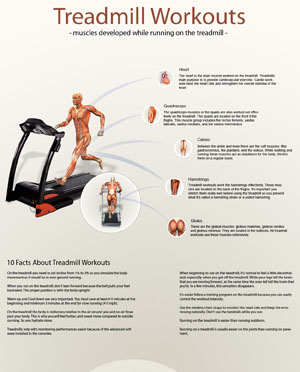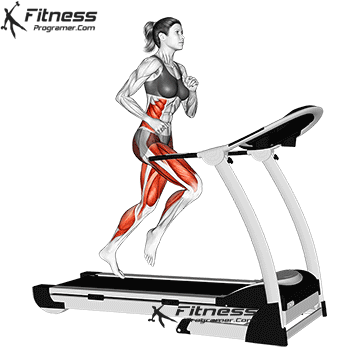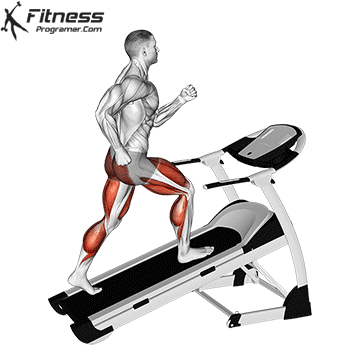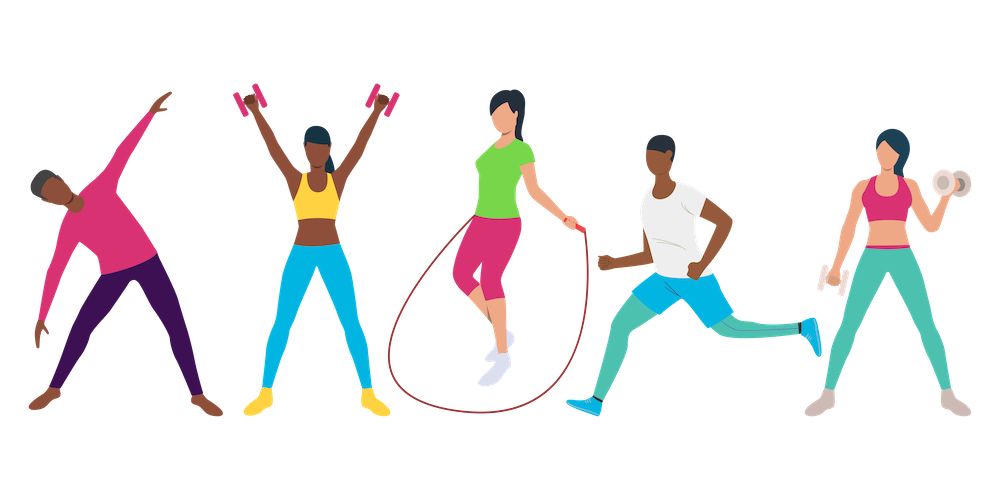Curious about the muscles that get a workout on the treadmill? Look no further! In this article, we’ll explore the various muscles that are engaged when you hop on that trusty machine. Whether you’re a seasoned runner or just starting out, understanding which muscles are being targeted can help you maximize your workout and achieve your fitness goals. So let’s dive in and discover the muscles that benefit from your treadmill sessions!

This image is property of www.runreviews.com.
Muscles Worked on Treadmill
When it comes to working out on a treadmill, there are several muscle groups that are engaged and strengthened. In this article, we will delve into the lower body muscles, core muscles, upper body muscles, and the benefits to the cardiovascular system.

This image is property of fitnessprogramer.com.
Lower Body Muscles
Quadriceps
The quadriceps, located in the front of your thigh, are the primary muscles targeted when using a treadmill. They consist of four individual muscles: the rectus femoris, vastus lateralis, vastus medialis, and vastus intermedius. These muscles work together to extend your leg at the knee, allowing you to push off with each stride.
By regularly using a treadmill, you can strengthen and tone your quadriceps. This can be particularly beneficial for activities such as running, hiking, and cycling, where strong quadriceps are essential for optimal performance.
Hamstrings
Next, let’s move on to the hamstrings, which are located at the back of your thigh. The hamstrings consist of three muscles: the biceps femoris, semitendinosus, and semimembranosus. These muscles work in conjunction with the quadriceps to provide balance and stability during movements on the treadmill.
Working on a treadmill can help to strengthen your hamstrings, which is important for maintaining proper posture and preventing injuries. Strong hamstrings also contribute to improved performance in activities that involve jumping, sprinting, and bending at the knee.
Glutes
The glutes, or the muscles of the buttocks, are another major muscle group that are engaged while using a treadmill. These muscles, including the gluteus maximus, medius, and minimus, play a vital role in stabilizing and propelling your body forward during each stride.
Regular treadmill workouts can help to tone and strengthen your glutes, resulting in improved posture, enhanced athletic performance, and reduced risk of lower back pain. Additionally, strong glutes are essential for activities that require hip extension, such as squatting and deadlifting.
Calves
Lastly, let’s not forget about the calves, which are located at the back of the lower leg. The primary muscles of the calves are the gastrocnemius and the soleus. These muscles work together to provide the necessary power for pushing off the ground and propelling your body forward.
Using a treadmill can effectively target and strengthen your calf muscles, leading to improved lower leg strength and endurance. Strong calves are especially important for activities such as running, jumping, and climbing stairs.

This image is property of fitnessprogramer.com.
Core Muscles
In addition to the lower body muscles, working on a treadmill also engages and benefits the core muscles. The core refers to the muscles located in your abdomen, lower back, and pelvis that work together to provide stability and support for your entire body.
Rectus Abdominis
One of the key muscles in the core is the rectus abdominis, commonly known as the six-pack muscles. This muscle group runs vertically down the front of your abdomen and is responsible for flexing your spine.
When you use a treadmill, your rectus abdominis is engaged to maintain stability and balance as you walk or run. Regular treadmill workouts can help to strengthen and tone this muscle group, resulting in improved posture, enhanced core stability, and a more defined midsection.
Obliques
The obliques are another set of core muscles that play a crucial role in treadmill workouts. Located on the sides of your abdomen, the obliques are responsible for rotating and bending your torso.
As you move on a treadmill, your obliques are actively engaged to maintain balance and control. By incorporating treadmill workouts into your fitness routine, you can effectively target and strengthen your obliques, leading to improved core stability and enhanced athletic performance.
Erector Spinae
The erector spinae muscles, which run along your spine, are also important for maintaining stability and proper posture while using a treadmill. These muscles are responsible for extending and rotating your spine.
Working on a treadmill helps to engage and strengthen the erector spinae muscles, resulting in improved spinal alignment and reduced risk of lower back pain. Regular treadmill workouts can contribute to better overall posture and increased back strength.

This image is property of ucarecdn.com.
Upper Body Muscles
While the focus of treadmill workouts primarily targets the lower body and core, there are also upper body muscles that are engaged to a lesser extent.
Shoulders and Arms
As you swing your arms while walking or running on a treadmill, the muscles in your shoulders and arms, including the deltoids, biceps, and triceps, are activated to provide balance and coordination.
While the upper body muscles may not be the main focus of treadmill workouts, incorporating arm swings or carrying light weights can help to engage these muscles further, providing a more full-body workout.
:max_bytes(150000):strip_icc()/quick-and-effective-treadmill-workouts-3866052_final_text-f855c2b476994121bdb5d3d5c7def251.png)
This image is property of www.verywellfit.com.
Cardiovascular System
In addition to strengthening and toning various muscle groups, working on a treadmill also has numerous benefits for the cardiovascular system. Regular aerobic exercise, such as treadmill workouts, can have a positive impact on your heart, lungs, and overall cardiovascular health.
Lungs
As you increase your pace on the treadmill, your breathing rate also increases, causing your lungs to work harder. This helps to improve lung capacity and oxygen uptake, resulting in enhanced respiratory function.
Working on a treadmill regularly can help to strengthen your lungs, leading to improved endurance and stamina. This can be particularly beneficial for athletes, as well as individuals looking to improve their overall fitness level.
In conclusion, working out on a treadmill engages a variety of muscle groups, including the lower body, core, and to a lesser extent, the upper body. Strengthening these muscles not only leads to improved physical fitness but also enhances overall performance in various activities. Additionally, treadmill workouts provide numerous benefits to the cardiovascular system, contributing to better heart and lung health. So lace up your sneakers, hop on that treadmill, and start reaping the rewards of a full-body workout!

